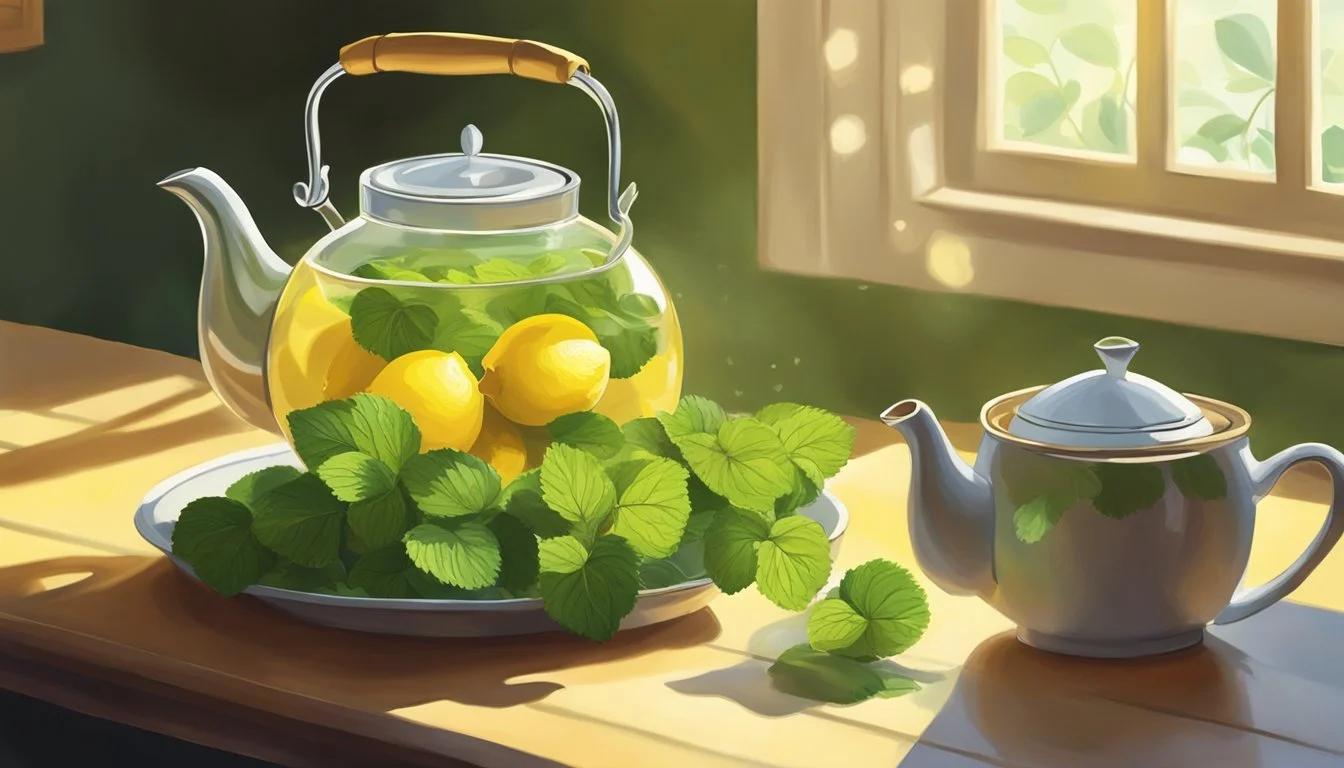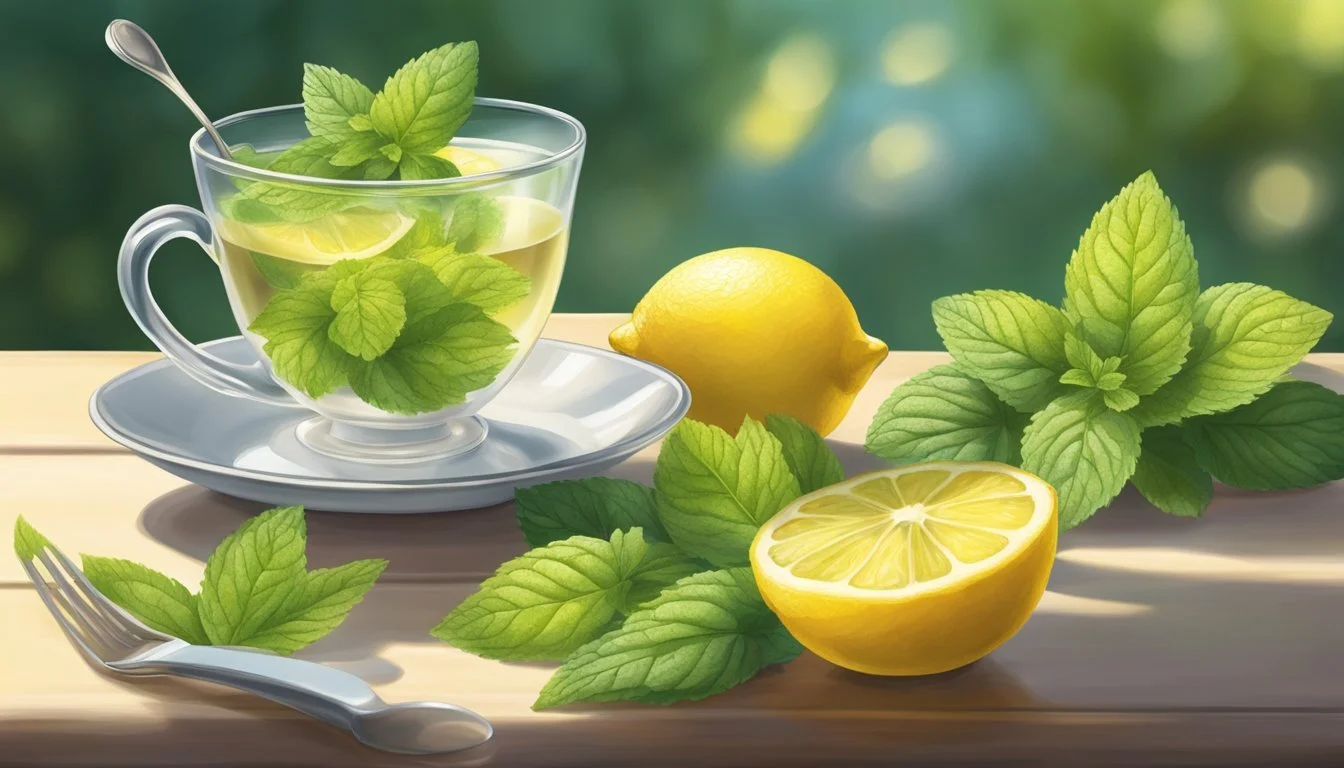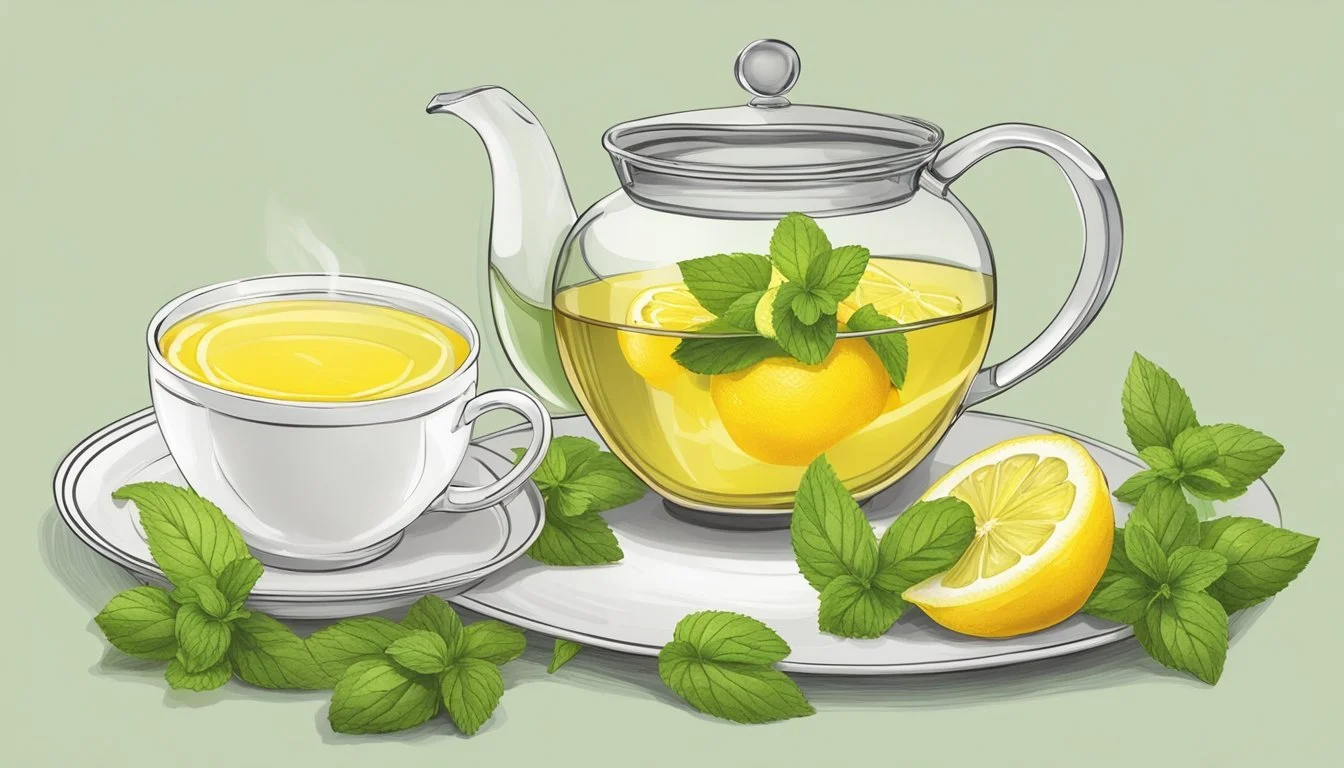Reviving Limp Lemon Balm
Tips for Refreshing Your Herb Supply
Lemon balm, scientifically known as Melissa officinalis, is a perennial herb cherished for its citrusy fragrance and a multitude of uses in teas, desserts, and natural remedies. Over time, even the most vibrant lemon balm can become limp or wilt, leaving many to wonder how to rejuvenate their precious herb. It is possible to recover and invigorate these delicate leaves, ensuring they retain their enticing aroma and flavor.
Reviving limp lemon balm requires a gentle but effective approach. Unlike other herbs, this lemon-scented plant benefits greatly from proper harvesting techniques, adequate hydration, and the right storage conditions. By addressing these key aspects, one can ensure that lemon balm remains an integral and fresh component for culinary and medicinal purposes, adding a refreshing, soothing element to a variety of applications.
Incorporating crisp lemon balm into teas and desserts not only imparts a bright, citrusy undertone but also utilizes the herb's natural calming properties. A well-preserved lemon balm contributes to richness in flavor and potential health benefits, standing as a testament to the importance of proper herb care and renewal practices.
Botanical Profile of Lemon Balm
Lemon balm (Melissa officinalis) is a citrus-scented herb in the mint family (Lamiaceae) renowned for its versatility in teas and desserts. As a perennial herb, it has made its mark in gardens for both its aromatic quality and its resilience.
Origins and Classification
Melissa officinalis, commonly known as lemon balm, traces its roots back to south-central Europe and the Mediterranean Basin, and has since become naturalized across the globe. It belongs to the Lamiaceae family, a group that includes many well-known herbs. Lemon balm stands out within this family for its distinct lemon-like aroma and has been appreciated since ancient times for its culinary and medicinal properties.
Growing and Harvesting
Lemon balm thrives in a well-drained soil, preferably with a sunny to partial shade exposure. It's an organic gardener's ally, as it requires minimal intervention once established. This herb grows 18-24 inches tall, with leaves that are ovate and wrinkled. It's important to note that lemon balm plants should be spaced approximately 18 to 24 inches apart to allow for adequate airflow and growth.
Harvesting lemon balm is straightforward and can be done as soon as the plant has enough foliage to sustain growth. Cutting the leaves in the morning after the dew has evaporated, but before the heat of the day, will help ensure the best flavor and potency for both culinary and therapeutic uses. It is generally recommended to harvest just before the plants flower for optimal taste. If maintained properly, lemon balm can withstand winter and return the following spring, ready for a new cycle of growth and harvest.
Health Benefits and Uses
Lemon balm, a citrus-scented herb, has been esteemed for its wide array of health benefits and uses in the culinary and medicinal realms. Rich in essential oils, it's known for its sedative and nervine properties that soothe the nervous system and help with anxiety.
Culinary Delights with Lemon Balm
Lemon balm enhances a variety of dishes with its lemony flavor. In culinary use:
Desserts: Fresh leaves or extracts add a citrus note to lemon tea cookies and lemon poppyseed loaves.
Herbal Teas: Fresh or dried lemon balm leaves make refreshing herbal teas known to foster relaxation.
Salads: Chopped leaves can brighten fruit or vegetable salads.
Lemon Balm in Natural Remedies
Throughout herbalism, lemon balm plays a key role due to its health benefits.
Anxiety and Stress: It acts as a natural sedative, helping reduce anxiety and stress.
Digestion: Lemon balm is believed to support digestion and alleviate gastrointestinal issues.
Immune System: With antiviral properties, it's often used to combat cold sores caused by the herpes simplex virus.
Lemon Balm for Skin Care
The herb's benefits extend to skincare, where its essential oils and antiviral traits are valuable.
Infused Oil: Lemon balm leaves can be steeped in a carrier oil to create an infused oil.
Cold Sores: Applied topically, the oil can aid in the healing of blisters and cold sores.
Skin Care: The antiviral properties of lemon balm essential oils may be incorporated into skincare routines to enhance skin health.
Creating Herbal Infusions
Herbal infusions harness the essence and benefits of herbs like lemon balm, transforming them into potent teas and oil-based preparations used for consumption or topical application.
Teas and Tinctures
Ingredients for Lemon Balm Tea:
Dried lemon balm - 1 teaspoon
Boiling water - 1 cup
Ingredients for Lemon Balm Tincture:
Fresh lemon balm - ¼ cup
High-proof alcohol - 1 cup
Tea Infusion Method:
Place the dried lemon balm into a teapot.
Pour boiling water over the herbs.
Cover and steep for 5 to 10 minutes.
Strain and serve the tea.
Tincture Method:
Fill a jar with fresh lemon balm.
Cover with high-proof alcohol.
Seal and store in a cool, dark place for 4-6 weeks, shaking occasionally.
Strain the tincture through cheesecloth.
Herbal teas, like those made from lemon balm, chamomile, or lavender, offer a delightful aroma and can be enjoyed for their soothing properties. A lemon balm tincture, created by steeping the fresh herb in alcohol, concentrates the plant's properties, making it suited for therapeutic use. The tincture can be taken in small doses when needed.
Oil Infusions for Topical Use
Ingredients for Herb-Infused Oil:
Dried lemon balm or other herbs such as calendula or lavender – ½ cup
Carrier oil (like coconut oil or grapeseed oil) – 1 cup
Oil Infusion Method:
Gently bruise or chop the dried herbs to release their essential oils.
Combine the herbs with the carrier oil in a jar.
Seal and place in a warm, sunny spot to infuse for 2-4 weeks, shaking occasionally.
Strain the oil infusion and store in a cool, dark place.
Oil infusions leverage the beneficial properties of herbs for external use, often in aromatherapy or skin care. Dried lemon balm, when infused with a carrier oil such as coconut or grapeseed oil, creates a fragrant and nourishing herbal oil. The infusion method involves a cold process, which preserves the delicate essence and medicinal qualities of the herb without heat.
DIY Lemon Balm Products
Creating DIY lemon balm products is a rewarding endeavor for those looking to harness the calming and citrusy properties of this herb. These products can range from lip care items to bath products and skin lotions, each serving a unique purpose and offering the soothing benefits of lemon balm.
Lemon Balm Lip Care
Lemon balm, known for its soothing properties, can be used to make lip balm that may help in preventing or soothing cold sores. A simple lip balm recipe includes melting beeswax, adding a carrier oil like jojoba oil or almond oil infused with dried lemon balm, then stirring in a few drops of lemon balm essential oil and a bit of vitamin E for its preserving and skin-nourishing effects. Once combined, this mixture can be poured into lip balm tubes or pots to solidify.
Essential items for Lemon Balm Lip Balm:
Beeswax or Candelilla wax
Carrier oil (Jojoba, Almond)
Lemon balm essential oil
Vitamin E
Lip balm tubes or pots
Lemon Balm in Aromatherapy and Bath Products
Lemon balm's essential oils are not only used for their pleasant citrus scent but also for their calming herb qualities in aromatherapy. To infuse lemon balm into bath products, begin by creating an herb-infused oil with dried lemon balm leaves and a carrier oil like coconut or jojoba oil, allowing the infusion to develop over several weeks. This infusion can then be added to homemade bath salts, bath bombs, or bubble baths to create a calming aromatherapy experience.
Ingredients for Infused Oils:
Dried lemon balm leaves
Carrier oil
Lemon Balm in Lotions and Salves
Rich in healing properties, lemon balm can be integrated into homemade lotions and salves to promote skin health. Combine the lemon balm-infused oil with other skin-soothing ingredients like cocoa butter or shea butter to create a creamy texture. Adding sweet melissa essential oil, which is another name for lemon balm oil, can enhance the lotion's effect. These lotions and salves can be employed to help reduce inflammation, calm the skin, and provide a gentle, soothing scent.
Components for Lotions and Salves:
Lemon balm-infused oil
Shea butter or Cocoa butter
Sweet Melissa (Lemon balm essential oil)
Lemon Balm in Seasonal and Special Occasions
Lemon balm, also known as sweet Melissa, offers a citrusy and fresh aroma that enriches various seasonal beverages and remedies, as well as providing a thoughtful touch to homemade gifts.
Refreshing Summer Drinks
In the sweltering heat of summer, fresh lemon balm elevates the humble iced tea to a refreshing concoction. Enliven your palate with a Lemon Balm Iced Tea; simply infuse a handful of fresh lemon balm leaves in boiling water, mix with your desired sweetener such as honey, and chill for a citrusy summer treat. For an invigorating twist, add slices of cucumber or a splash of soda water to your iced tea.
Ingredients for Lemon Balm Iced Tea:
Fresh lemon balm leaves
Boiling water
Honey or preferred sweetener
Optional: cucumber slices, soda water
Cozy Winter Remedies
During cold winters, lemon balm tea serves as a soul-warming elixir. This herbal tea, with its pleasant lemon scent and flavor, may assist with indigestion and insomnia. For a comforting nighttime beverage, steep lemon balm with oatstraw and enjoy the natural, soothing properties before bed.
How to Prepare Lemon Balm Tea for Insomnia Relief:
Combine dried lemon balm leaves with oatstraw.
Pour hot water over the herbs and steep for 5-10 minutes.
Strain and optionally sweeten with honey before drinking.
Gift Ideas with Lemon Balm
Lemon balm's versatility makes it ideal for creating homemade gifts. A lip balm recipe utilizing lemon balm infused oil can be a delightful natural gift. Another thoughtful option is to prepare small jars of lemon balm essential oil, highlighting its vibrant aroma and natural ingredients.
Simple Lemon Balm Lip Balm Recipe:
Melt equal parts beeswax and infused oil.
Pour into small containers and let set.
Infused Oil Instructions:
Place dried lemon balm leaves in a jar.
Cover with carrier oil and seal.
Store in a dark, cool place for 2-3 weeks before straining the oil.
Additional Applications
Lemon balm, scientifically known as Melissa officinalis, has uses extending beyond the kitchen into realms like natural dyeing and garden ecology, highlighting its versatility and eco-friendly benefits.
Lemon Balm in Natural Dyeing
Lemon balm's application in natural dyeing is an inventive way to use this perennial herb. Dyes made from the plant can imbue fabrics with warm, yellow hues. The process is eco-friendly, utilizing the leaves to produce a colorant that is both beautiful and sustainable. A simple method involves simmering the leaves to extract the dye, which can then be applied to fibers like wool or silk. Mixing the dye with a mordant, such as alum, can help fix the color to the material. For enhancing the dye's color, natural additives like beeswax can be used.
Lemon Balm's Role in Garden Ecology
In a garden's ecosystem, lemon balm's robust fragrance and ample nectar serve as attractors for a variety of pollinators, including bees and butterflies. This increases pollination within the garden, which is crucial for the production of fruits and vegetables. Its use in "a woman’s garden" refers to its historical inclusion in gardens cultivated for household uses, where both its aesthetic appeal and beneficial properties were valued. The plant contributes to biodiversity, which is an essential aspect of maintaining a healthy and balanced garden ecosystem.
Lemon Balm's Companion Plants
Companion planting with lemon balm offers several advantages:
Peppermint: Both being members of the mint family, they share growing requirements and can be planted together, although care should be taken to manage their growth.
Oregano: This herb thrives in similar conditions as lemon balm and can benefit from lemon balm's ability to attract pollinators.
Passionflower: While not a traditional companion, their mutual benefit from pollinators can create a symbiotic relationship.
When paired with lemon balm, these companion plants can play a role in natural pest control and provide mutual growth benefits. However, gardeners should exercise control to prevent invasive growth patterns in these species.







